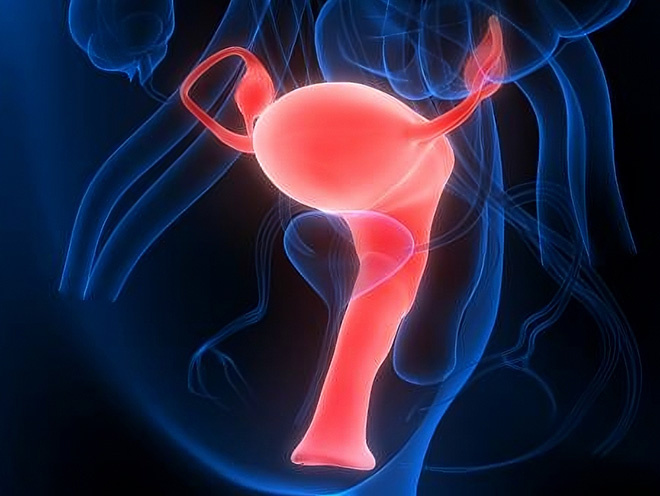 |

What is cervical cancer?
Cervical cancer occurs in cells in the cervix of the uterus and is usually associated with human papillomavirus (HPV) infection. Cervical cancer is usually asymptomatic in its early stages, but cervical screenings such as pap smears can detect it early.
Can middle and late-staged cervical cancer be cured? Minimally invasive treatment techniques with fewer side effects, less trauma and better results can effectively kill cancer cells while avoiding hysterectomy and preserving the patient's fertility.
For more knowledge about cancer, please click online doctors for consultation.




Cervical cancer is one of the common malignant cancers among females. It is the only cancer that with known cause. That is human papillomavirus(HPV),which can spread directly through dermal contact and has an incubation lasting for more than ten years. Cervical cancer is preventable and detectable. Learning about cervical cancer symptoms and undergo screening regularly can help discover cervical cancer and take up treatment as early as possible.
Signs of cervical cancer:
1. Cervical erosion
Cervical erosion: cervical cancer patients usually are accompanied with cervical erosion, and severe cervical erosion is both main factor and symptom of cervical cancer.
2. Contact bleeding
Contact bleeding: contact bleeding is the most prominent sign of cervical cancer, which can be found in the form of colporrhagia in 70%~80% of cervical cancer patients. It often appears with fresh blood in vaginal secretion during sexual activities, gynecological examinations, or making great effort when loosening stools.
3. Irregular vaginal bleeding
Irregular vaginal bleeding: Menstrual period come back to old women years after menopause. As there will be no symptom like stomachache or waist pain, and the bleeding amount is usually low, it is easily ignored. However, irregular vaginal bleeding is early sign of cervical cancer, which has called many elder patients’ attention to go to hospital and thus helped them with early diagnosis and treatment.
4. Pain
Pain: pain usually occurs in the lower stomach or lumbar-sacral area, sometimes in the upper stomach, thigh and hip joint. It becomes severer in menstrual period, defecation or sexual activities. Especially when the inflammation spreads backwards to the utero-sacral ligament or along the bottom of broad ligament, chronic inflammation of connective tissue next to uterus is formed and cervical cardinal ligament thickens, the pain will become even severer. When touched in the cervix, patients will feel pain in the iliac fossa and the lumbar-sacral area, while some other patients can even have symptoms like nausea.
5. Increasing vaginal secretion
Increasing of vaginal secretion: Clinically, about 75%~85% of patients have various degrees of vaginal secretion increase. Most of them appear as increasing of leucorrhoea, which later is accompanied with smell and color changes. Due to the stimulation of the lesion, cervical glands becomes active in its secretion function and produce mucoid leucorrhoea. The abnormalities of the leucorrhoea, including amount increasing and characteristic changing, are early signs of cervical cancer.
Experts from St. Stamford Modern Cancer Hospital Guangzhou remind that, if you have above symptoms, go to the hospital timely for examination and treatment.
For more knowledge about cancer, please click online doctors for consultation.
Good cervical cancer examination or screening can help patients diagnose cervical cancer so as to detect cervical cancer as early as possible and timely perform cervical cancer treatment.
Cervical cancer is the one most women worry a lot because it threatens female’s health and life. Good cervical cancer screening and diagnosis are respectively helpful for cervical cancer prevention and cervical cancer treatment effect. The following methods are cervical cancer diagnosis methods introduced by experts of St. Stamford Modern Cancer Hospital Guangzhou.
Cervical Scraping Smear Cytological Examination
Cervical scraping smear cytological examination is the main approach for detecting precancerous lesion of cervical cancer and early cervical cancer. Be sure to draw the tissue of the wanted spot and careful microscopic examination for there might be 5-10% false negative rate, therefore, clinical situation shall be combined to conduct examination periodically. This is what we can apply as screening.
Iodine Test
Normal squamous epithelium of cervix or vagina is rich in amylon and can be dyed into brown by iodine solution, while columnar epithelium of cervical canal, cervical erosion and abnormal squamous epithelium area (including squamous metaplasia, atypical hyperplasia, cancer in situ or infiltrating carcinoma area) are free of amylon, so they cannot be dyed. In clinical, vaginoscope is applied to expose cervix, and then superficial mucago shall be wiped out, after that smear the cervix and fomix with iodine solution, if there is any abnormal iodine negative area, then biopsy of such area shall be passed for pathology check.
Biopsy of Cervix and Cervical Canals
Perform smearing on these examination of III-IV or above of cervical scraping smear cytological examination, if the biopsy of cervix is negative, then the biopsy for 4 spots on point 6/9/12/3 of the section area between cervical squamous and columnar epithelium shall be carried out; or draw tissue multiple spots for biopsy
Vaginoscopic Examination
Vaginoscopic examination cannot directly diagnose cancer tumor, but can help biopsy to choose right position. It is estimated that if biopsy is performed with the help of vaginoscopic examination, then the diagnosis of early cervical cancer can reach to 98% accurate rate. However, vaginoscopic examination cannot replace scraping cytological exanimation or biopsy, and cannot detect the lesion inside cervical canals as well.
Experts of St. Stamford Modern Cancer Hospital Guangzhou remind that good cervical cancer examination and screening can help people to find cervical cancer in timely manner so as not to delay the treatment for cervical cancer.
For more knowledge about cancer, please click online doctors for consultation.
Cervical Cancer Stages and Corresponding 5-year Survival Rate:
Stage II cervical cancer: 85%-90%;
Stage III cervical cancer: 35%;
Stage IV cervical cancer: 15%.
For more knowledge about cancer,please click online doctors for consultation.